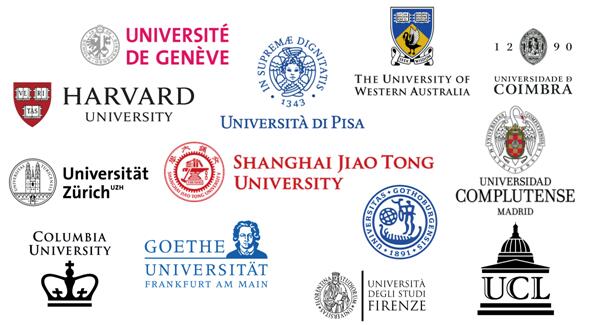Be careful! Asymptomatic atrial fibrillation is more terrifying | Patient | Symptoms
Recently, Mr. Xu, who lives in Pengpu New Village, Jing'an District, woke up in the morning and found that his left limb was restricted in movement and his speech was unclear. His family quickly sent him to the nearest emergency department of Shibei Hospital in Jing'an District, Shanghai for treatment, and his head CT showed a cerebral embolism.
A careful doctor found on a routine electrocardiogram that Mr. Xu had atrial fibrillation, but he did not experience any discomfort at the time. After diagnosis by multidisciplinary experts in the hospital, it was determined that Mr. Xu's cerebral embolism was caused by the detachment of an atrial thrombus formed by atrial fibrillation, which is known as a cardiogenic stroke.
What is atrial fibrillation? Atrial fibrillation is a type of supraventricular tachycardia, accompanied by uncoordinated atrial excitation and ineffective atrial contractions. It typically occurs in patients with various organic heart diseases, preexcitation syndrome, and other systemic diseases. When atrial fibrillation occurs, patients often experience obvious symptoms such as palpitations and chest tightness.
Xu Peier, the attending physician of the Department of Cardiology at Shibei Hospital, said that in the daily diagnosis and treatment process, the vast majority of patients with atrial fibrillation have symptoms. Although asymptomatic atrial fibrillation like Mr. Xu is only a minority, asymptomatic atrial fibrillation that remains calm is even more frightening.
Experts say that due to the unpredictable occurrence of asymptomatic atrial fibrillation, the risk of asymptomatic atrial fibrillation is much higher than that of symptomatic atrial fibrillation. Only by understanding the hazards of asymptomatic atrial fibrillation and taking timely and effective diagnostic and treatment measures can we better help people stay away from the harm it causes to their health.
Why does asymptomatic atrial fibrillation occur? Dr. Xu Peier analyzed that there are three main causes of asymptomatic atrial fibrillation: firstly, the impact of high blood sugar on neural sensitivity. Medical research has found that many patients with asymptomatic atrial fibrillation have symptoms of high blood sugar, and patients with diabetes combined with heart disease are more likely to have asymptomatic atrial fibrillation than patients with common heart disease.
Secondly, radiofrequency ablation causes damage to the myocardium. Radiofrequency ablation is a commonly used method in the treatment of patients with paroxysmal tachycardia. After receiving radiofrequency ablation treatment, patients may experience atrial fibrillation without obvious symptoms due to the necrosis of this part of the myocardium. Even in patients with severe symptoms in the past, asymptomatic atrial fibrillation may occur after radiofrequency ablation. According to medical statistics, patients who have undergone radiofrequency ablation have a probability of developing asymptomatic atrial fibrillation that is about 3 to 7 times higher than before ablation.
Finally, the side effects of antiarrhythmic drugs. During the process of taking antiarrhythmic drugs, the patient's atrioventricular conduction is easily blocked by the drugs, and the side effects of the drugs can easily induce other arrhythmias in the patient. The combination of the two can lead to asymptomatic arrhythmias and manifest as asymptomatic atrial fibrillation.
How can asymptomatic atrial fibrillation be detected? Dr. Xu introduced that patients with advanced age, heart failure, obesity, hypertension, obstructive sleep apnea or structural heart disease, who have undergone cardiac surgery, cryptogenic stroke/transient ischemic attack, genetic arrhythmia, and special occupational groups are at high risk of atrial fibrillation and can be screened through routine electrocardiogram/dynamic electrocardiogram examination and long-term electrocardiogram monitoring.
In the face of asymptomatic atrial fibrillation, Dr. Xu Peier said that the treatment mainly focuses on the following three aspects: first, rhythm control therapy, which uses certain treatment methods to keep the patient's heart beating regularly, including arrhythmia drug treatment and non drug treatment, including radiofrequency or cryoablation, electroconversion, and surgical treatment.
The second is ventricular rate control treatment. The drugs used to control ventricular rate mainly include non dihydropyridine calcium channel blockers β Receptor blockers and digitalis, etc. Non pharmacological treatment methods mainly rely on radiofrequency ablation.
The third is anticoagulant therapy. Anticoagulant drugs are divided into vitamin K antagonists and new oral anticoagulants. Patients taking warfarin should pay attention to regular monitoring of coagulation function to avoid excessive medication causing bleeding. For patients with left atrial appendage electrical isolation, who are not suitable for long-term standardized anticoagulation treatment, or who still experience thromboembolism after long-term standardized anticoagulation, left atrial appendage occlusion surgery may be considered.




